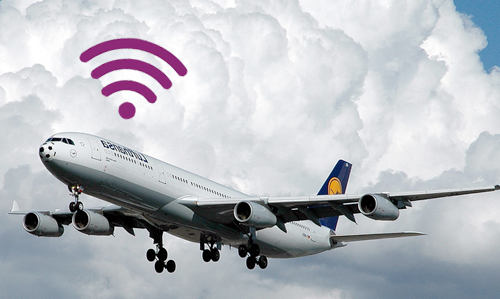Low-cost airlines retain a lead when it comes to online engagement but do not necessarily have everything their own way. Legacy Airlines are constantly developing strategies to enhance customer experiences through digital marketing approaches in order to generate customer engagement.
Building long-term relationships with customers is essential for any sustainable business and this applies equally to online elements of a business. Customer Relationship Management is a marketing-led approach to building and long term business with customers. (Chaffey and Ellis-Chadwick, 2012). Having more control over customer relationship allow airlines to increase their capacity to proactively monitor and plan how efficient they are with aspects such as routes, timetable, seat allocation, refreshments and cancellations during the flight.
Airlines such as Delta airlines has started using the Guest Service Tool, which provides its 22,000 flight attendants with key information so they can better engage with customers while in flight. Similar to this, British Airways and Iberia or its competitor Lufthansa have started incorporating ‘Head of Innovation and Technology’ roles and digital labs into the organisation in order to come up with ways to better engage with the customer.
The following points are some of the ways that legacy carriers are using to engage customers and differentiate from low-cost airlines.
#1 Boarding Wearables
In order to enhance a great customer experience, Legacy carriers should focus on every stage of the journey process, involving when passengers book the ticket, check-in, drop bags, board the plane, travel and arrive to destination. One of the innovations playing an important role in defining the airport experience is wearable technologies. Virgin Atlantic led the way being the first airline with a trial of its kind in London Heathrow’s Upper Class Wing, and has since announced that it will productionise Google Glass.
Smartwatches Bording passes are being offered by of Vueling, Iberia and AirBerlin and Copenhagen Airport has undertaken a passenger-facing trial of Google Glass, Furthermore, Japan Airlines has equipped select members of staff with smartwatches as part of an ongoing trial.
#2 Retail – Apps integrating NFC
Air New Zealand has taken advantage of today’s ‘coffee culture’ and has been featuring barista’s who make freshly brewed coffee to passenger’s preferences in its ‘Koru’ lounges for some time. Customers can order their favourite coffee by ticking a few boxes on a piece of paper, add their name and hand it over.However, this initiative has been taken to digital levels improving the flyers experiences.
In a clever move, passengers now can order Barista-made coffee via ANZ’s tablet or smartphone app the minute they walk into one of the airline’s Koru Clubs around New Zealand, including its international lounge at Auckland Airport.
#3 Innovative Content Campaigns
https://www.youtube.com/watch?v=UsMZRl71Zo4
Virgin America excelling itself in the world of social video, and launched a gigantic multichannel, world-building content campaign that is as hilarious as it is inventive. The campaign is a six-hour video in which “BLAH Airlines” illustrates a satire of how awful air travel can be. The message behind this ad is that BLAH Airlines is the antithesis of Virgin America, and that life is far too short to be wasting your time flying with any other airline. Furthermore, Virgin take the ad further by creating a website for BLAH Airlines that not only takes ages to load but is also non-responsive, mobile unfriendly, difficult to read. Responses from audience has been positive and also a blog post about the 18 reasons to love Virgin’s BLAH Airlines content marketing campaign has been written.
#4 Email Marketing Innovation
Email is the 21st century evolution of traditional direct marketing. It’s almost free and gets delivered almost instantaneously (they don’t call conventional mail snail mail for nothing). It retains the strengths of a push medium, while adding the potential for automated response loops and tracking via digital channels. (Ryan, n.d.)
Email Marketing is a digital marketing strategy frequently used by Airlines in which the messages which are sent often contains broad content and do not provide personalised experience that today’s customers expect, especially for first-class travellers. However, as that every traveler experiences elements of travel differently, Delta Airlines found the way to take its SkyMiles frequent flier emails to new heights by using data to deliver segmented, relevant messages. Together with its agency DigitasLBi and marketing technology provider Experian Marketing Services, in May 2015, Delta launched a Flight Cycle Program sends targeted, triggered emails during the four key stages of their travel experience: plan, prep, fly, and home. As result customer engagement has increased. Along with cutting back on email clutter, the Flight Cycle emails produced open rates of 60% (doubling Delta’s 30% benchmark) and a 17.4% click-through rate—up from 4%.
Chaffey, D. and Ellis-Chadwick, F. (2012). Digital marketing. Harlow: Pearson Education.
Ryan, D. (n.d.). Understanding digital marketing.









